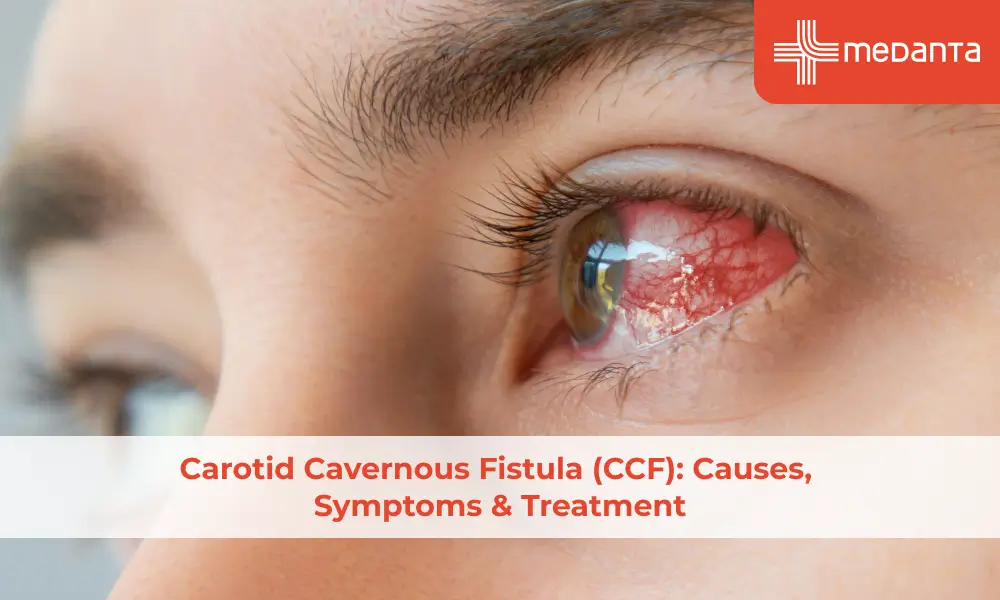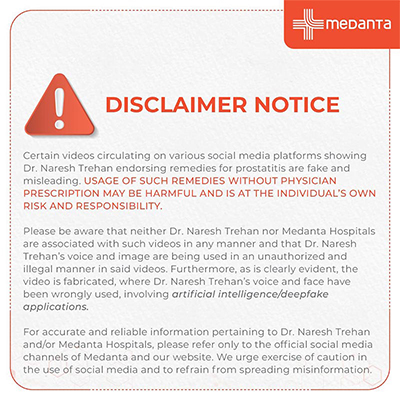Penile Cancer: Symptoms, Causes, Diagnosis & Treatment

TABLE OF CONTENTS
Penile cancer is a rare cancer that develops on the skin or within the tissues of the penis. This cancer predominantly occurs in men aged 55 and older, and prevalence varies significantly across different regions.
The impact of this disease largely depends on early detection. Patients diagnosed in the early stages have up to 85% survival rate over five years. However, this drops dramatically to 11% in the advanced stages.
This article explores the essential aspects of penile cancer, including its symptoms, reasons, diagnosis, and treatment options. Understanding these elements helps ensure early detection and better outcomes for those affected by this condition.
Symptoms
Recognising the symptoms of penile cancer can significantly improve treatment outcomes.
The earliest signs of penile cancer typically appear as visible changes to the skin of the penis. These changes most commonly affect the foreskin (in uncircumcised men) or the head (glans) of the penis. Men should be alert to any unusual changes that persist for more than four weeks.
Common physical symptoms include:
A growth, lump or sore that doesn't heal within 4 weeks
Changes in skin colour on the penis or foreskin
Flat growths that appear bluish-brown
Small, crusty bumps
A reddish, velvety rash under the foreskin
Thickening of the skin
Additionally, men might experience other warning signs, such as:
Bleeding from the penis or under the foreskin
Foul-smelling discharge
Difficulty pulling back the foreskin (phimosis)
Swelling or irritation, particularly at the head of the penis
Although these symptoms don't always indicate cancer, they require prompt medical attention. Many of these symptoms are more likely caused by other conditions, such as infections or allergic reactions.
If the cancer has spread, swelling in the groin area may occur. This happens when cancer cells travel to lymph nodes in the groin and cause them to enlarge. However, swollen lymph nodes don't always signal cancer spread, as they can also swell in response to an infection in the penile area.
Causes and Risk Factors
While researchers haven't identified the exact cause of penile cancer, several risk factors have been established. Human papillomavirus (HPV) plays a significant role, with approximately half of all penile cancers linked to this infection. HPV spreads through close skin-to-skin contact, usually during sexual activity, including vaginal, anal and oral sex.
Notable risk factors include:
Age: Penile cancer predominantly affects older men aged 55 or over. The condition rarely affects males under 40 years of age.
Circumcision status: Men who aren't circumcised may face higher risk. Those circumcised as babies appear to have a much lower chance of developing penile cancer than those who weren't. However, this protective effect isn't observed when circumcision occurs in adulthood.
Phimosis and smegma: Phimosis, a condition where the foreskin becomes too tight to retract, increases penile cancer risk. This condition can result in a build-up of smegma, a cheese-like substance made of dead skin cells that collects under the foreskin, potentially causing irritation and inflammation.
Tobacco use: Men who smoke or use other tobacco forms have an increased risk of developing penile cancer. Tobacco users who also have HPV infections face an even higher risk, as chemicals found in cigarettes can damage cells in the penis.
Weakened immune system: Men with HIV infection or AIDS demonstrate a higher risk of penile cancer. Similarly, those taking immune-suppressing drugs following organ transplants may face increased risk.
PUVA treatment: Men who have undergone PUVA (psoralen and ultraviolet A) treatment for psoriasis show a higher rate of penile cancer. This treatment uses radiation, which may contribute to cellular changes.
Poor hygiene: Inadequate washing of the penis, especially under the foreskin, may contribute to increased risk through the build-up of irritating substances.
Despite these risk factors, it is essential to remember that having one or more risk factors doesn't guarantee developing penile cancer. On the other hand, some men develop the disease without any known risk factors. Understanding these risk elements nonetheless remains crucial for awareness and prevention.
Diagnosis and Tests
Confirming a diagnosis of penile cancer requires several medical tests and examinations.
Initial Examination: When a patient presents with suspicious symptoms, the doctor initially conducts a thorough physical assessment. This examination includes looking at the penis for any unusual skin changes, such as lumps or discolourations, and checking the lymph nodes in the groin for swelling. The doctor will likewise ask about symptoms, habits, and medical history to establish a preliminary assessment.
Biopsy: A biopsy becomes the definitive test to confirm penile cancer. Doctors remove a small tissue sample from the affected area under local anaesthetic so patients do not feel pain during the procedure. The biopsy results usually become available within a few weeks, at which point specialists explain the findings and discuss the next steps.
Imaging Tests:
If cancer is confirmed, doctors must determine whether it has spread beyond the penis. Consequently, they may order various imaging tests to assess the extent of the disease:
CT (computed tomography) scans provide the exact size of the cancer & whether the tumour has spread to lymph nodes or other body parts.
MRI (magnetic resonance imaging) produces detailed images of soft tissues. For optimal MRI results, doctors might inject a hormone-like substance called prostaglandin to make the penis erect.
Ultrasound proves helpful in determining how deeply cancer has spread into the penis and identifying enlarged lymph nodes in the groin.
Some patients may need PET scans or chest X-rays, especially if doctors suspect the cancer has spread.
Lymph Node Assessment and Cancer Staging:
Checking nearby lymph nodes is essential since penile cancer often spreads first to lymph nodes in the groin area. Doctors may examine these nodes through:
Fine needle aspiration: The doctor inserts a thin, hollow needle into the lymph node to extract cells and fluid for examination. This method helps determine if enlarged lymph nodes contain cancer.
Dynamic sentinel lymph node biopsy: This test identifies the first lymph node(s) to which penile cancer may spread, allowing doctors to check specifically for cancer cells in these locations.
Once all tests are complete, doctors determine the cancer's stage, which indicates how far it has spread. The TNM (Tumour, Node, Metastasis) staging system is most commonly used for penile cancer. This system considers:
The extent of the primary tumour (T)
Spread to nearby lymph nodes (N)
Spread to distant body parts (M)
Essentially, staging helps doctors create an appropriate treatment plan. Clinical staging (cTNM) uses examination and test results, while pathological staging (pTNM) incorporates tissue examination from surgery and tends to be more accurate.
Patients should feel comfortable asking their doctors to explain results in understandable terms throughout this diagnostic process. Many find the staging terminology complex, but understanding one's diagnosis forms the foundation for making informed treatment decisions.
Management and Treatment
Treatment options for penile cancer have evolved substantially over the years, with modern approaches focusing on both eliminating the tumour and preserving penile function when possible. The choice of treatment depends primarily on the stage of cancer, its location, and the patient's overall health.
Surgical Approaches
Surgery remains the most common treatment for all stages of penile cancer. For early-stage cancers, doctors often employ penile-sparing techniques to preserve as much normal function as possible. The type of surgery varies based on the cancer's extent and location.
For very small or surface-level cancers, these surgical options may be recommended:
Mohs microsurgery: The surgeon removes thin layers of cancer-containing skin and examines each layer until no cancer cells remain, preserving the maximum amount of healthy tissue
Laser surgery: Uses intense light beams to remove cancerous tissue without excessive bleeding
Cryosurgery: Freezes and destroys abnormal tissue using extreme cold
Circumcision: Removal of the foreskin, often sufficient when cancer is confined to this area
Wide local excision: Removes the cancer along with a border of healthy tissue around it
Penectomy: For more advanced cases, partial or total penectomy might be necessary. In a partial penectomy, the surgeon removes part of the penis, whereas a total penectomy involves removing the entire penis. After a penectomy, reconstructive surgery might be an option to build a new penis, though this typically occurs in stages at specialised centres.
Radiotherapy utilises high-energy rays to destroy cancer cells and can be administered in two main ways. External beam radiation delivers radiation from a machine outside the body, whereas internal radiation (brachytherapy) places radioactive materials directly into or near the cancer.
Radiation serves multiple purposes in penile cancer treatment. It can be used as a primary treatment for smaller tumours, as an alternative to surgery, or as an adjuvant therapy after surgery to decrease the risk of recurrence.
Chemotherapy
Chemotherapy utilises drugs to kill cancer cells and can be administered topically or systemically. Topical chemotherapy applied directly to the skin, is primarily used for treating very early-stage (stage 0) penile cancer.
Systemic chemotherapy, delivered through the bloodstream, treats cancer that has spread beyond the penis. The most common drugs used include cisplatin, fluorouracil, paclitaxel, and ifosfamide, often given in combinations. For example, doctors frequently recommend the TIP regimen (paclitaxel, ifosfamide, and cisplatin) for neoadjuvant therapy in patients with lymph nodes larger than 4 cm.
Immunotherapy and Emerging Treatments
Immunotherapy represents a newer approach to treating penile cancer. Topical imiquimod helps stimulate the immune system to fight cancer cells. Furthermore, immune checkpoint inhibitors are now recommended as second-line treatment for advanced or metastatic penile cancer with specific characteristics, such as high tumour mutational burden.
Clinical researchers continue to explore new treatment options, including targeted therapies and novel immunotherapy approaches. For example, HPV vaccines show promise not only for prevention but potentially for the treatment of HPV-related penile cancers.
Stage-specific Treatment
Treatment recommendations vary by cancer stage:
Early-stage cancers (stages 0 and I) typically respond well to conservative approaches like topical treatments or limited surgery.
Intermediate stages often require more extensive surgery with possible lymph node removal.
Advanced stages (III and IV) usually need multimodal treatment combining surgery, radiation, and chemotherapy.
Overall, the treatment landscape for penile cancer continues to evolve, with increasing emphasis on organ preservation and quality of life alongside effective cancer control. Regular follow-up remains essential after treatment to monitor for recurrence and manage any long-term effects.
Prevention
Implementing certain preventive strategies can substantially lower one's risk of developing penile cancer. Fortunately, research has identified several effective approaches to reducing this risk. These are:
HPV Vaccination
HPV vaccination stands as a crucial preventive measure against penile cancer. Human papillomavirus (HPV) is responsible for approximately 50.8% of all penile cancers globally. The HPV vaccine demonstrates remarkable effectiveness, with studies showing it can prevent HPV infection with a higher efficacy of reducing genital warts and anal intraepithelial neoplasia.
Circumcision and Hygiene
Circumcision, especially when performed in infancy, appears to offer protective benefits against penile cancer. Studies indicate that men circumcised as children have a markedly lower chance of developing penile cancer compared to uncircumcised men.
For uncircumcised men, proper hygiene becomes essential. This involves:
Regularly retracting the foreskin and cleaning the entire penis
Preventing accumulation of smegma (a cheese-like substance made of dead skin cells)
Seeking medical attention if the foreskin becomes tight and difficult to retract (phimosis)
Lifestyle Modifications
Making specific lifestyle changes can meaningfully reduce penile cancer risk. Primarily, tobacco cessation represents one of the most important modifiable factors. Notably, research shows that men who smoke or use tobacco items have an increased risk of developing penile cancer.
Safe sexual practices also play a vital role in prevention. By using condoms consistently, men can:
Lower their risk of contracting HPV
Reduce their chances of developing penile cancer
Protect against other STIs that may increase cancer risk
Regular Health Monitoring
Maintaining vigilance about genital health constitutes an essential preventive strategy, such as:
Performing regular self-examinations
Seeking prompt medical attention for any unusual changes
Managing existing conditions like HIV with strict medication adherence
Getting treated for phimosis if it develops
Early detection of any abnormalities enables timely intervention, potentially preventing progression to cancer.
While completely eliminating penile cancer risk isn't possible, combining these preventive approaches can substantially reduce one's likelihood of developing the disease.
Outlook / Prognosis
The survival outlook for patients with penile cancer largely depends on how early the disease is detected and treated. When the cancer is detected early and remains confined to the penis, the chances of long-term survival are generally favourable. However, outcomes become less certain if the tumour spreads to nearby lymph nodes. Once the cancer reaches distant parts of the body, survival becomes significantly more challenging.
The degree of lymph node involvement is a key factor in determining the outlook for patients with penile cancer. When cancer is limited to a small number of lymph nodes, the chances of long-term survival are significantly higher. In contrast, widespread nodal involvement is linked to a much poorer prognosis.
Other factors affecting prognosis include:
Bilateral lymph node involvement (cancer in nodes on both sides)
The ratio of positive to total lymph nodes examined
Presence of extracapsular extension (cancer growing beyond the lymph node)
Pelvic lymph node metastasis
Response to chemotherapy
Treatment choices play a vital role in shaping both survival outcomes and quality of life. Today's strategies prioritise organ preservation without compromising cancer control. Advances in medical techniques have made penis-sparing treatments a viable option for many early-stage cases, with studies showing very low rates of true local recurrence.
Living With Penile Cancer
Adjusting to life after a penile cancer diagnosis involves far more than just completing medical treatment. The physical effects of surgery or other interventions often influence not only bodily function but also a man's self-image and emotional well-being. While many patients retain sexual function following partial penectomy, more extensive procedures can significantly reduce this possibility.
Quality of life often varies depending on the treatment approach. Organ-preserving techniques, now increasingly preferred, tend to offer better cosmetic and functional outcomes while still achieving strong cancer control. Even subtle physical changes can have an impact—yet most patients report no difficulties with mobility or self-care after treatment, highlighting the effectiveness of modern approaches.
The psychological impact can be considerable. Around half of all penile cancer patients experience some form of psychiatric symptoms. However, many develop effective coping strategies. Interestingly, many patients report that their relationship with their partner did not deteriorate after treatment; some even noted improvement.
Support resources play a vital role in recovery:
Professional counselling helps reduce stress and improve quality of life
Cancer support groups provide opportunities to connect with others facing similar challenges
Specialised sexual therapy assists with adapting to changes in sexual function
Organisations like Maggie's offer care through centres located beside NHS cancer hospitals
Practical considerations after treatment may include changes to urination patterns and adapting sexual activities. Some patients discover alternative ways of experiencing sexual pleasure even after extensive surgery.
Open communication with doctors remains crucial throughout recovery. Patients should feel comfortable discussing concerns about physical changes, sexual function, or emotional well-being with their medical team.
Eventually, many survivors adapt successfully to their new normal. With appropriate support and resources, men can maintain meaningful relationships and quality of life while navigating the challenges of living with or beyond penile cancer.
Conclusion
Penile cancer remains a rare but serious condition that requires prompt medical attention.
Medical advances offer various treatment options, from organ-sparing procedures to comprehensive surgical approaches. These treatments help many patients maintain quality of life while fighting the disease. Additionally, preventive measures like HPV vaccination, good hygiene, and regular self-examination significantly reduce cancer risk.
Patients who receive proper support and care often adapt well to life after treatment. Support groups, counselling services, and doctors work together to help survivors maintain meaningful relationships and daily activities. Regular check-ups, open communication with doctors, and a strong support system help patients navigate their recovery journey successfully.
FAQs
What are the early signs of penile cancer?
Early signs include persistent growths or sores on the penis, changes in skin colour, thickening of the skin, and unusual discharge. If you notice any of these symptoms lasting more than four weeks, consult a doctor promptly.
How is penile cancer diagnosed?
Diagnosis generally involves a physical examination, biopsy of suspicious areas, and imaging tests such as CT scans or MRIs. Doctors may also perform lymph node assessments to determine if the cancer has spread.
What treatment modalities are available for penile cancer?
Treatment options depend on the cancer stage but may include surgery, radiotherapy, chemotherapy, and immunotherapy. For early-stage cancers, doctors often use penile-sparing techniques to preserve function.
Can penile cancer be prevented?
While not entirely preventable, risk can be reduced through HPV vaccination, good hygiene practices, and avoiding tobacco use. Regular self-examinations and prompt medical attention for unusual changes are also crucial.






